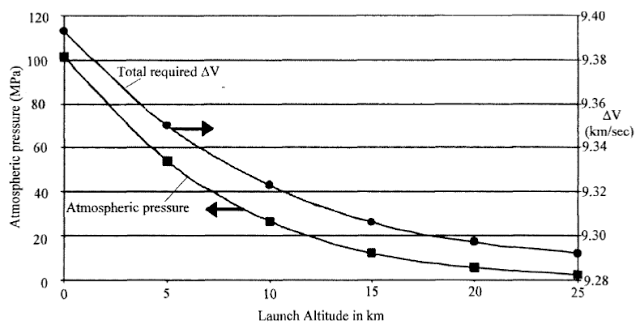

| Visitors Now: | |
| Total Visits: | |
| Total Stories: |

| Story Views | |
| Now: | |
| Last Hour: | |
| Last 24 Hours: | |
| Total: | |
25 kilometer tall towers for single stage to orbit launches
From
High Altitude Launch for a Practical SSTO (6 pages, 2003 by Geoffrey A. Landis and Vincent Denis)
Existing engineering materials allow the construction of towers to heights of many kilometers. Orbital launch from a high altitude has significant advantages over sea-level launch due to the reduced atmospheric pressure, resulting in lower atmospheric drag on the vehicle and allowing higher rocket engine performance. High-altitude launch sites are particularly advantageous for single-stage to orbit (SSTO) vehicles, where the payload is typically 2% of the initial launch mass. An earlier paper enumerated some of the advantages of high altitude launch of SSTO vehicles. In this paper, we calculate launch trajectories for a candidate SSTO vehicle, and calculate the advantage of launch at launch altitudes 5 to 25 kilometer altitudes above sea level. The performance increase can be directly translated into increased payload capability to orbit, ranging from 5 to 20% increase in the mass to orbit. For a candidate vehicle with an initial payload fraction of 2% of gross lift-off weight, this corresponds to 31% increase in payload (for 5-km launch altitude) to 122% additional payload (for 25-km launch altitude).
Example calculations of mass required for a fifteen-km tower sized to support a 2000 ton launch weight:
Structural material: Graphite epoxy:
LL = 107.5 km No taper needed
tower mass 280 tons
Cast steel:
LL = 15.4 km taper required
tower mass 5300 tons
(area taper ratio 2.6)
See more and subscribe to NextBigFuture at 2012-09-12 00:49:52 Source: http://nextbigfuture.com/2012/09/25-kilometer-tall-towers-for-single.html
Source:



